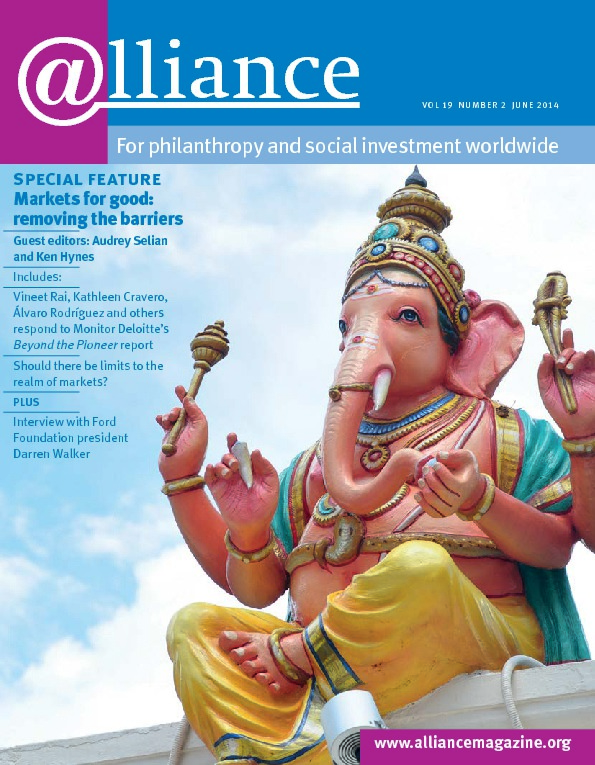Environmental giving from both UK and continental European foundations has grown in recent years, but the environment remains a low priority for foundations.This is the general conclusion of three reports published since November 2013.  Where the Green Grants Went 6 (WTGGW6) analyses nearly 6,000 environmental grants from UK funders while its European counterpart, Environmental Funding by European Foundations, looks at grants made by 62 European foundations. These two ‘supply side’ studies are complemented by Passionate Collaboration?, based on a survey of the chief executives of 140 leading UK environmental organizations.
Where the Green Grants Went 6 (WTGGW6) analyses nearly 6,000 environmental grants from UK funders while its European counterpart, Environmental Funding by European Foundations, looks at grants made by 62 European foundations. These two ‘supply side’ studies are complemented by Passionate Collaboration?, based on a survey of the chief executives of 140 leading UK environmental organizations.
The environment accounts for less than 4 per cent of foundation giving in the UK, and within that percentage foundations remain focused on a traditional environmental agenda, including biodiversity and species preservation, agriculture and food, and terrestrial ecosystems. Funding for work on climate change, though growing in importance, remains tiny in comparison to the scale of the challenge. WTGGW6 shows that UK foundation funding for climate change mitigation amounted to £44.8 million between 2010 and 2012 – 22.4 per cent of environmental grants, just about half of what Real Madrid paid for footballer Gareth Bale last year.
Both the European and UK research reveals the need for more funding relating to the systemic drivers of environmental harm, such as consumption patterns and trade and finance policies. More than two-thirds of environmental organization chief executives surveyed in Passionate Collaboration saw a need for more resources to be directed at redefining economic growth and progress, yet work on these issues accounted for less than 0.8 per cent of UK environmental philanthropy between 2010 and 2012.
While foundation grants accounted for just 10 per cent of the total income of the 140 environmental organizations, their chief executives highlighted the vital role of foundation capital in providing unrestricted core funding and ‘patient’ capital to their organizations, fostering innovation and allowing them the independence to challenge the status quo. Many commented on the lower bureaucratic requirements of foundations compared with other grantmakers, and many appreciated the non-financial support that foundations provide. Both sides also highlighted the importance of foundations’ ability to provide ‘risk’ capital. Environmental organization CEOs feel the need to break out of tried-and-tested approaches, but find it hard to break away from the ‘hamster wheel’ of fundraising and management. Funders could help provide space for reflection and joint conversation to address this challenge.
In addition to the need for more support for systemic work, the research throws up important insights on the geographic distribution of funding. For example, less than 4 per cent of grants from European foundations were directed at influencing European Union decision-making on the environment, despite the fact that more than 80 per cent of European environmental legislation is crafted at the EU level. Globally, North America receives nearly 180 times as much environmental philanthropy (on a per capita basis) as does Asia. Given the speed with which the environmental footprint of countries like China and India is increasing, this seems a disproportionate allocation of resources.
The three reports break new ground in providing a detailed analysis of the demand and supply sides of the grants market for a specific sector of civil society. They give funders detailed information about where resources are (and aren’t) being deployed, and environmental leaders’ views as to which skill-sets are most in need of investment.
The authors hope that funders will move away from a focus on whether ‘organization A is better than organization B’ towards more of an ecosystem approach, with an emphasis on what will make the whole greater than the sum of the parts. We would welcome an opportunity to discuss the findings with foundations working on other issues.
Jon Cracknell works with the family of the late Sir James Goldsmith, managing their philanthropy. Email jon@jmgfoundation.org
Florence Miller is coordinator of the Environmental Funders Network. Email florence@greenfunders.org
Phil Murray is a former researcher at EFN. Email phil_murray58@hotmail.com
For more information
Visit http://www.greenfunders.org/resources to download Where the Green Grants Went 6: Patterns of UK funding for environmental and conservation work and Passionate Collaboration: Taking the pulse of the UK environmental sector
Visit the EFC website to download Environmental Funding by European Foundations: Vol 2







Comments (0)